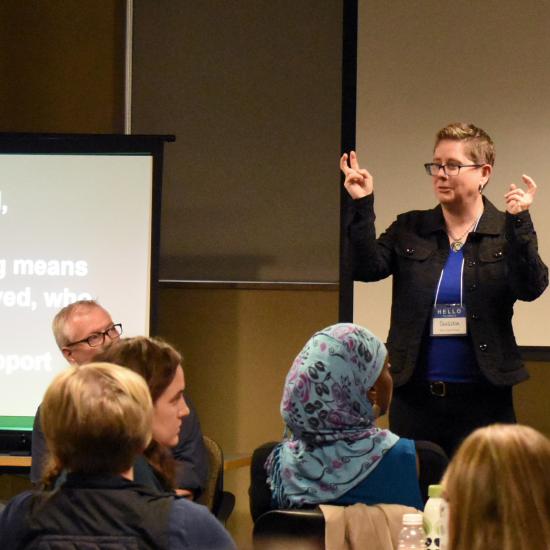Developing a Plan for Minnesota’s System Serving Children who are Deaf, Deafblind, and Hard of Hearing
The Minnesota Commission of the Deaf, Deafblind and Hard of Hearing (MNCDHH) advocates for communications access and equal opportunity with Minnesotans who are deaf, deafblind, and hard of hearing. A key to the Commission’s success is the Collaborative, a network of agencies and organizations working to create positive, systemic changes that achieve better education and career outcomes for students who are deaf, deafblind, and hard of hearing.
In the summer of 2018, MNCDHH partnered with Wilder Research to develop a Collaborative plan to guide their work for the next five years. The plan would provide a shared path toward ensuring that the system of services for children age birth to 21 who are deaf, deafblind, and hard of hearing, and their families have access to the range of services and supports they need.
How we got there
MNCDHH wanted a plan informed by data, an understanding of existing services and supports, and deep engagement from communities invested in positive outcomes for students who are deaf, deafblind, and hard of hearing.
To meet that need, Wilder Research gathered detailed information from a variety of sources about children who are deaf, deafblind, and hard of hearing in Minnesota. We also conducted detailed interviews with professionals and parents to better understand the greatest service needs. And through facilitated discussions with the Collaborative work groups, we identified the strengths, weaknesses, opportunities, and threats facing Minnesota’s service system.
The resulting plan is the culmination of broad participation and deep engagement from many people involved with Minnesota’s system.
Setting future priorities
These engagement activities helped Wilder Research and the Collaborative to develop a set of proposed strategic areas based on voices from work groups and interviews, as well as a scan of existing supports. Work groups came together at a fall 2018 summit to review the results and brainstorm strategic priorities and action items for the next five-year plan.
Several strategic issues rose to the top at the summit:
- Increase consistency and organization of resources to ensure all children and families have access.
- Collaborate and network across stakeholder groups to ensure programs and services are supporting and not duplicating each other’s work.
- Promote mental health and using a “whole child” approach to help children develop a strong identity and ability to self-advocate.
- Assess and address licensure and qualifications for teachers and interpreters to ensure quality and to improve shortages.
Next, MNCDHH and the Collaborative work groups will develop action plans to address these strategic issues through 2023, with efforts to streamline and align strategies across the work groups as appropriate. The 50 Collaborative Plan stakeholders are excited to continue their mission to improve education and employment outcomes for children who are deaf, deafblind, and hard of hearing and their families.
Read the Collaborative Plan for Minnesota’s System Serving Children Who Are Deaf, DeafBlind, And Hard of Hearing: 2019-2024
Photo courtesy of Minnesota Commission of the Deaf, DeafBlind & Hard of Hearing (MNCDHH) / Keystone Interpreting Solutions
